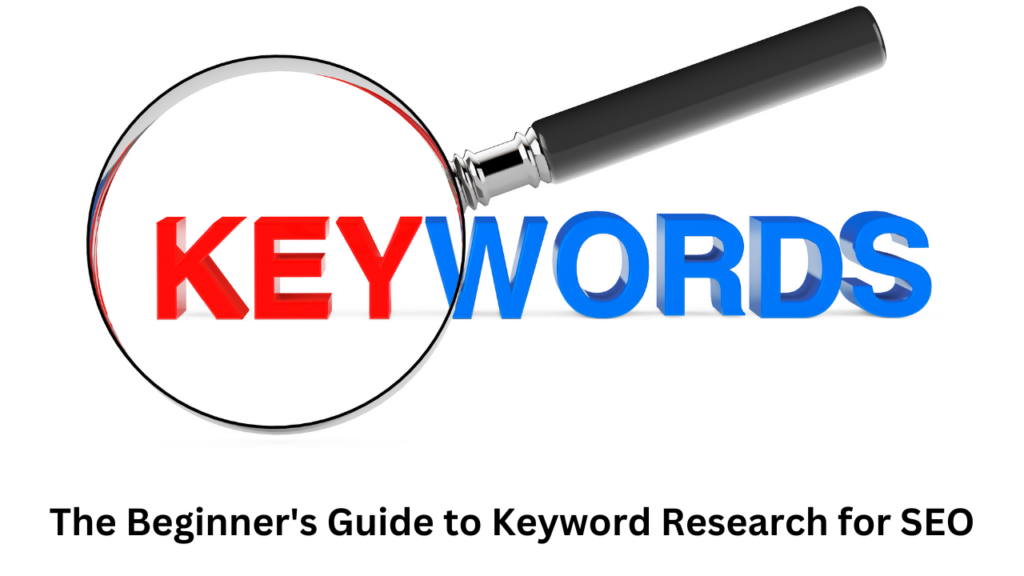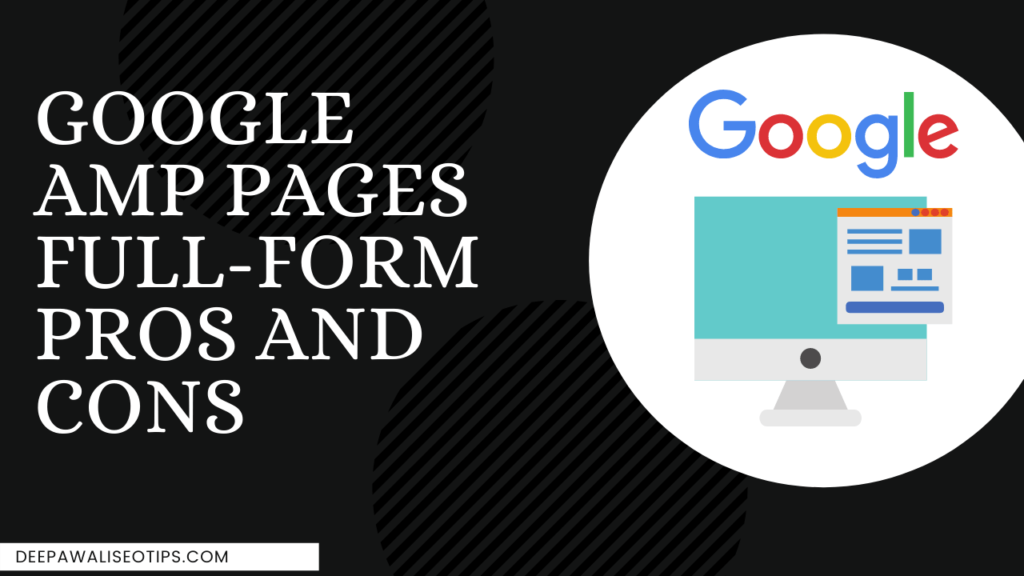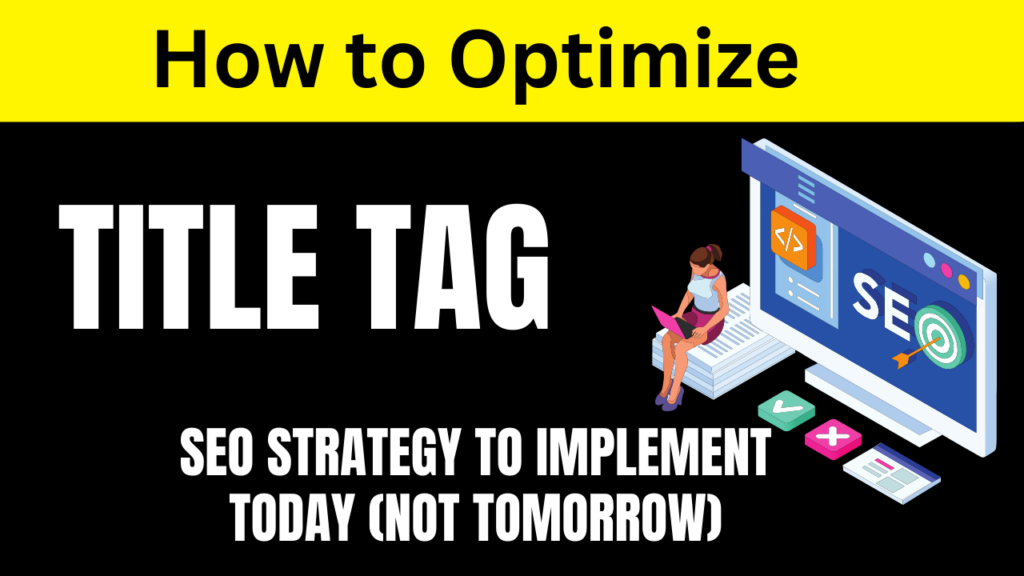Greetings! In this comprehensive beginner’s guide, I will walk you through the key aspects of on-page SEO and how it can significantly improve your website’s visibility and rankings on search engines like Google.
On-page SEO, also known as on-site SEO, focuses on optimizing various elements directly on your webpages to make them more attractive to search engines. By implementing on-page SEO techniques, you can enhance your website’s chances of appearing in relevant search results and drive more organic traffic to your site.
Throughout this guide, we will explore essential topics such as keyword research, content optimization, HTML elements, site architecture, and more. By understanding and implementing these strategies effectively, you’ll be on your way to optimizing your website for better search engine rankings.

Key Takeaways:
- On-page SEO involves optimizing elements directly on your webpages to improve visibility and rankings.
- Key on-page SEO techniques include keyword research, content optimization, and HTML element optimization.
- Optimizing site architecture and ensuring a smooth user experience are crucial for on-page SEO success.
- Mobile optimization and site speed optimization are essential factors for better rankings.
- Utilize SEO tools to conduct keyword research and evaluate on-page optimization factors.
The Importance of On-Page SEO
On-page SEO plays a vital role in boosting your website’s visibility and rankings on search engines. By implementing on-page optimization techniques, you can improve your site’s chances of appearing in relevant search results and attracting organic traffic.
One of the key advantages of on-page SEO is that it helps search engines understand the relevance and quality of your content. By optimizing your website’s on-page elements, such as meta tags, headings, and URL structure, you provide valuable information to search engines, enhancing your chances of ranking higher.
Moreover, on-page SEO practices, including keyword research and content optimization, contribute to better overall SEO performance. By conducting thorough keyword research, you can uncover the specific terms and phrases that your target audience is searching for, allowing you to optimize your content accordingly. Content optimization, on the other hand, involves creating high-quality and valuable content that aligns with user intent, ultimately improving your website’s chances of ranking for multiple keywords.
By focusing on on-page SEO and following best practices, you can ensure that your website meets the established standards for search engine optimization. This includes optimizing HTML elements, such as meta tags and heading tags, as well as improving site architecture and user experience. By adhering to these best practices, you can maximize your website’s visibility, attract more organic traffic, and achieve better overall search engine rankings.
| Table: Benefits of On-Page SEO |
|---|
| Improved search engine visibility |
| Higher rankings in relevant search results |
| Increased organic traffic |
| Enhanced user experience |
| Better overall SEO performance |
Keyword Research for On-Page SEO
Keyword research is a fundamental aspect of on-page SEO. It involves identifying the specific keywords and phrases that your target audience is using to search for relevant content. By conducting thorough keyword research, you can uncover valuable insights about user intent and the language they use, allowing you to optimize your content accordingly. Keyword research tools such as Ahrefs, AnswerthePublic, and UberSuggest can assist you in finding relevant keywords and understanding their search volume and competition.
When conducting keyword research, it’s important to consider both short-tail and long-tail keywords. Short-tail keywords are typically shorter and more generic, while long-tail keywords are longer and more specific. Long-tail keywords often have lower search volume but higher intent, meaning that users who search for these keywords are more likely to convert into customers. By targeting a mix of short-tail and long-tail keywords in your content, you can reach a broader audience while also capturing users with specific needs and preferences.
Another important aspect of keyword research is understanding keyword difficulty. This refers to how challenging it is to rank for a particular keyword. Keyword research tools often provide a metric for keyword difficulty, allowing you to prioritize keywords that have a higher likelihood of ranking well. By targeting keywords with lower difficulty, you can increase your chances of ranking higher in search results and attracting more organic traffic to your website.
Keyword Research Summary
- Keyword research is a critical aspect of on-page SEO that involves identifying the specific keywords and phrases used by your target audience.
- Thorough keyword research provides insights into user intent and helps you optimize your content accordingly.
- Keyword research tools like Ahrefs, AnswerthePublic, and UberSuggest assist in finding relevant keywords and understanding their search volume and competition.
- Consider targeting a mix of short-tail and long-tail keywords to reach a broader audience and capture users with specific needs.
- Understanding keyword difficulty can help you prioritize keywords that have a higher likelihood of ranking well.
By incorporating keyword research into your on-page SEO strategy, you can ensure that your content aligns with what your target audience is searching for, increasing the visibility and relevance of your website in search results.

Content Optimization for On-Page SEO
Content optimization is a crucial on-page SEO technique that involves creating high-quality and relevant content to improve your website’s visibility and search engine rankings. By optimizing your content, you can ensure that it aligns with the search intent of your target audience and meets established SEO best practices. Here are some key strategies and best practices for content optimization:
1. Keyword Research and Placement
Keyword research is the foundation of content optimization. By conducting thorough keyword research, you can identify the specific keywords and phrases that your target audience is using to search for relevant information. Incorporate these keywords naturally and strategically throughout your content, including in the page title, headings, and body text. This helps search engines understand the relevance and context of your content, improving its chances of ranking higher in search results.
2. Quality and Relevance
In addition to keyword optimization, it is important to focus on creating high-quality and relevant content. Ensure that your content provides valuable information, answers the user’s query, and offers unique insights. By providing valuable and engaging content, you can attract more organic traffic, increase user engagement, and improve your website’s overall SEO performance.
3. Readability and Formatting
Readable and well-formatted content not only enhances the user experience but also improves your website’s SEO. Break your content into smaller paragraphs, use descriptive headings (H2, H3), and include bullet points or numbered lists to make it visually appealing and easier to scan. Use appropriate font sizes, colors, and formatting to make your content visually appealing and accessible to your audience.
| Benefits of Content Optimization for On-Page SEO |
|---|
| Improved visibility and rankings in search results |
| Increased organic traffic |
| Enhanced user experience and engagement |
| Higher conversion rates and improved website performance |
In conclusion, content optimization is a vital on-page SEO technique that should not be overlooked. By conducting keyword research, creating high-quality and relevant content, and ensuring readability and formatting, you can improve your website’s visibility, attract more organic traffic, and enhance user experience. Implement these content optimization best practices to maximize your on-page SEO efforts and achieve better search engine rankings.
HTML Elements for On-Page SEO
When it comes to on-page SEO, optimizing HTML elements is crucial for improving the visibility and rankings of your web pages. By paying attention to meta tags, heading tags, URL structure, and image optimization, you can enhance your website’s overall SEO performance. Let’s take a closer look at each of these elements and their importance:
Meta Tags
Meta tags, including title tags and meta descriptions, play a significant role in on-page SEO. The title tag appears as the clickable headline in search engine results and should be concise and descriptive, incorporating relevant keywords. The meta description provides a brief summary of the page’s content and should compel users to click through. By optimizing meta tags, you can improve the visibility and click-through rate of your web pages.
Heading Tags
Heading tags, such as H1 and H2, help search engines understand the structure and hierarchy of your content. The H1 tag represents the main heading on a page, while H2 tags are used for subheadings. By properly using heading tags and incorporating keywords naturally, you can enhance the readability and SEO of your content.
URL Structure
An optimized URL structure can contribute to better rankings in search engine results. Including relevant keywords in your URLs provides valuable information to both search engines and users about the content of your web pages. Keep your URLs short, descriptive, and concise, avoiding unnecessary words or characters for better SEO performance.
Image Optimization
Image optimization is an essential part of on-page SEO. By using descriptive file names and adding appropriate alt text, you can improve the accessibility and visibility of your images in search results. The alt text should accurately describe the content of the image and include relevant keywords, helping search engines understand the context of the image and improving your overall SEO.

By optimizing these HTML elements, you can enhance your on-page SEO and increase the chances of your web pages ranking higher in search engine results. Remember to use relevant keywords naturally and create a user-friendly experience to attract more organic traffic and improve your website’s visibility.
Site Architecture for On-Page SEO
When it comes to on-page SEO, the site architecture plays a crucial role in determining the success of your website. A well-organized and logical site structure not only makes it easier for search engines to crawl and understand your content, but it also improves the overall user experience.
One important aspect of site architecture is internal linking. By strategically linking between relevant pages within your website, you can guide search engines through your content and establish a clear hierarchy. This not only helps search engines discover and index your pages more efficiently but also allows users to navigate your website and access relevant information easily.
Another key consideration in site architecture is optimizing for user experience. Factors such as site speed, mobile optimization, and intuitive navigation all play a role in providing a seamless browsing experience for your visitors. Search engines also consider user experience as a ranking factor, so it’s essential to prioritize these aspects in your on-page SEO efforts.
Benefits of Optimizing Site Architecture:
1. Improved crawlability: A well-structured site architecture allows search engine bots to crawl and index your pages more easily, leading to better visibility in search results.
2. Enhanced user experience: A logical and organized site structure makes it simple for users to navigate your website, find relevant information, and engage with your content.
3. Better internal linking: Strategic internal linking helps distribute link equity throughout your website, improving the overall authority and ranking potential of your pages.
Site Speed Optimization:
A key aspect of site architecture is optimizing for site speed. A faster-loading website not only improves user experience but also helps search engines understand and rank your content. To optimize site speed, consider compressing images, minifying CSS and JavaScript files, leveraging browser caching, and utilizing a content delivery network (CDN).
Mobile Optimization:
In today’s mobile-first world, optimizing your website for mobile devices is crucial. Ensure that your site is responsive and mobile-friendly, with a design that adapts to different screen sizes. This not only improves user experience but also helps your website rank higher in mobile search results.
| Benefits of Optimizing Site Architecture | Site Speed Optimization | Mobile Optimization |
|---|---|---|
| Improved crawlability | Compress images | Responsive design |
| Enhanced user experience | Minify CSS and JavaScript | Mobile-friendly layout |
| Better internal linking | Leverage browser caching | Adaptive design for different screen sizes |
Optimizing URLs for On-Page SEO
When it comes to on-page SEO techniques, optimizing the structure of your URLs is crucial. A well-structured URL not only helps search engines understand the content of your web pages but also provides users with valuable information about what they can expect when clicking on your link. To optimize your URLs for on-page SEO, consider the following best practices:
- Include relevant keywords: Incorporate keywords that accurately represent the content of your web pages. This helps search engines and users understand the relevance of your pages in relation to specific search queries.
- Keep URLs concise: Aim for short and concise URLs that are easy to read and understand. Avoid unnecessary words or characters that can clutter your URL and make it less user-friendly.
- Use hyphens to separate words: Instead of using spaces or underscores, use hyphens to separate words in your URLs. This improves readability and ensures that search engines can interpret the words in your URL correctly.
- Avoid using dynamic parameters: If possible, avoid using dynamic parameters in your URLs. Dynamic parameters can make your URLs appear long and complex, which can negatively impact search engine rankings.
By following these on-page SEO practices for optimizing your URLs, you can improve the visibility and rankings of your web pages, making it easier for search engines and users to find and understand your content.
| Before Optimization | After Optimization |
|---|---|
| example.com/page?=12345 | example.com/product-name |
| example.com/category/subcategory/page?=98765 | example.com/category/product-name |
By comparing the “Before Optimization” and “After Optimization” examples in the table above, you can see the difference that optimizing your URLs can make. The optimized URLs are shorter, more descriptive, and include relevant keywords, making them more user-friendly and search engine-friendly.
Remember, URL optimization is just one aspect of on-page SEO. By combining it with other techniques such as keyword research, content optimization, and HTML element optimization, you can create a comprehensive on-page SEO strategy that maximizes the visibility and rankings of your web pages.

Additional Resources
- 7 Essential SEO Tips for Beginners
- The Ultimate Guide to Keyword Research
- Content Optimization Strategies for Better SEO
Image Optimization for On-Page SEO
Image optimization is a crucial aspect of on-page SEO that often gets overlooked. By optimizing your website’s images, you can improve your site’s visibility in search results and enhance the overall user experience. One key element of image optimization is the use of alt text. Alt text, or alternative text, is a descriptive text that is added to an image tag in HTML. It provides a textual description of the image, allowing search engines to understand its content and context.
When adding alt text to your images, it’s important to be descriptive and use relevant keywords. This helps search engines determine the relevance of the image to the surrounding content and improves the chances of your website ranking higher in search results. Additionally, alt text is beneficial for users who are visually impaired or have slow internet connections. It allows screen readers to accurately describe the image to them, and it also displays in place of the image if it fails to load, ensuring a seamless user experience.

In addition to alt text, there are other aspects to consider when optimizing your images for on-page SEO. File size and format are essential factors that can impact your website’s loading speed. Compressing your images without compromising their quality can significantly improve your site’s performance. Choosing the correct file format, such as JPEG or PNG, depending on the type of image, can also help reduce file sizes.
Furthermore, optimizing the file name of your images is another effective strategy. Avoid generic names like “image.jpg” and instead use descriptive names that include relevant keywords. This not only helps search engines understand the content of the image but also improves the overall optimization of your web page.
Internal Linking for On-Page SEO
Internal linking is an important on-page SEO technique that involves linking between different pages within your website. It plays a crucial role in improving the visibility and rankings of your web pages on search engines. By strategically implementing internal links, you create a logical and hierarchical structure for your content, making it easier for search engines to discover and crawl your website.
One of the key benefits of internal linking is that it helps search engines understand the relevance and relationships between different pages on your site. By linking from one page to another, you signal to search engines that the linked page is valuable and related to the content of the page with the link. This can improve the overall visibility and rankings of your web pages, as search engines consider internal links as indicators of content importance.
When implementing internal links, it’s important to consider the anchor text—the clickable text that users see. Anchor text should be descriptive and relevant to the linked page’s content, as it provides additional context to both users and search engines. It’s also important to ensure that your internal links are natural and relevant, adding value to the user experience and guiding visitors to related information within your website.
Benefits of Internal Linking:
- Improves website crawlability and indexation by search engines
- Signals content relevance and relationships to search engines
- Enhances user experience by guiding visitors to related information
- Increases the visibility and rankings of your web pages
By utilizing internal linking as part of your on-page SEO strategy, you can improve the overall performance of your website and attract more organic traffic. It’s important to regularly review and optimize your internal linking structure to ensure it aligns with your content and business objectives. Remember to focus on providing value to your users and search engines by linking to relevant and informative pages within your website.
| Benefits of Internal Linking | Example |
|---|---|
| Improves website crawlability and indexation by search engines | Linking from a blog post to a relevant product page |
| Signals content relevance and relationships to search engines | Linking from a category page to individual product pages |
| Enhances user experience by guiding visitors to related information | Linking from a product page to customer reviews and related articles |
| Increases the visibility and rankings of your web pages | Linking from a high-ranking page to a newer or lesser-known page |
User Experience and Site Speed Optimization for On-Page SEO
When it comes to on-page SEO, optimizing user experience and site speed are crucial factors in ensuring the success of your website. As search engines prioritize websites that provide a seamless and enjoyable user experience, it’s essential to focus on creating a responsive and intuitive interface to keep your visitors engaged.
Optimizing user experience involves designing a website that is easy to navigate, visually appealing, and user-friendly. It’s important to have clear and logical site architecture, ensuring that visitors can find the information they are looking for quickly and effortlessly. Incorporating intuitive menus, search bars, and breadcrumbs can further enhance the user experience, allowing users to navigate through your website with ease.
Site speed optimization is equally important as it directly affects user experience and search engine rankings. Slow loading times can frustrate visitors, leading to higher bounce rates and a decrease in organic traffic. To improve site speed, consider optimizing image sizes, enabling browser caching, minifying CSS and JavaScript files, and utilizing a content delivery network (CDN) to distribute your website’s content more efficiently.
| Benefits of User Experience and Site Speed Optimization | Methods of Optimization |
|---|---|
| 1. Enhanced user engagement and satisfaction | – Designing a clean and intuitive website interface |
| 2. Lower bounce rates and increased time on site | – Optimizing site speed by compressing images and minifying files |
| 3. Improved search engine rankings | – Enabling browser caching and utilizing a CDN |
| 4. Increased conversion rates and revenue | – Implementing responsive design for mobile optimization |
By prioritizing user experience and site speed optimization, you create a positive environment for your visitors, encouraging them to stay longer, explore more, and potentially convert into customers. With search engines like Google placing significant importance on these factors, you can improve your website’s visibility and rankings, ultimately driving more organic traffic and achieving better on-page SEO results.
Mobile Optimization for On-Page SEO
Mobile optimization is a critical aspect of on-page SEO. With the increasing number of users accessing the internet through mobile devices, search engines prioritize mobile-friendly websites in their rankings. To ensure that your website is optimized for mobile, there are several key techniques and practices to implement.
Responsive Design
One of the most important aspects of mobile optimization is using responsive design. This design approach allows your website to automatically adapt and adjust its layout based on the user’s screen size and device. By using responsive design, you can provide a consistent and user-friendly experience across a variety of devices, from smartphones to tablets.
Fast Loading Times
Mobile users expect websites to load quickly, and search engines consider site speed as a ranking factor. To optimize your website for mobile, it is crucial to reduce loading times. Compressing images, minifying CSS and JavaScript files, and leveraging browser caching are just a few techniques that can help improve your website’s speed on mobile devices.
| Mobile Optimization Techniques | Benefits |
|---|---|
| Optimizing images for mobile | Improve page load speed and user experience |
| Using a mobile-friendly font size | Enhance readability on smaller screens |
| Designing a mobile-friendly navigation menu | Improve ease of use and navigation |
| Ensuring touch-friendly buttons and links | Enhance user interaction on touchscreens |
Optimizing Content for Mobile
When optimizing your content for mobile, consider the limited screen space and the shorter attention spans of mobile users. Make sure your paragraphs are shorter and use concise headings to break up the content. Additionally, prioritize the most important information at the beginning of the page, so it is immediately visible to mobile users.
By implementing mobile optimization techniques, you can improve your website’s visibility and user experience on mobile devices. Remember to regularly test your website’s mobile performance and make necessary adjustments to ensure optimal results.
On-Page SEO Best Practices
When it comes to optimizing your web pages for search engines, following on-page SEO best practices is crucial. By implementing these techniques, you can improve your website’s visibility, attract more organic traffic, and ultimately achieve better search engine rankings.
To start, thorough keyword research is essential for on-page SEO. Identify the keywords and phrases that your target audience is using to search for relevant content. Tools like Ahrefs, AnswerthePublic, and UberSuggest can assist you in finding the right keywords and understanding their search volume and competition.
Next, focus on creating high-quality, valuable content that aligns with your audience’s search intent. Incorporate target keywords naturally throughout your content and structure it with headers. Consider including relevant subtopics and providing unique insights to attract more organic traffic and increase your chances of ranking for multiple keywords.
Optimizing HTML elements is another important aspect of on-page SEO. Make sure to optimize meta tags, such as title tags and meta descriptions, to improve the visibility and click-through rate of your web pages. Utilize appropriate heading tags, like H1 and H2, to help search engines understand the structure and hierarchy of your content. Additionally, optimize your URLs by including relevant keywords to provide valuable information to search engines and users.
Finally, prioritize user experience and site speed optimization. A smooth and intuitive website navigation enhances engagement and reduces bounce rates, improving search engine rankings. Ensure that your website is mobile-friendly and optimized for fast loading times, as search engines prioritize mobile-friendly sites in their rankings.
| Best Practices | Impact on SEO |
|---|---|
| Thorough keyword research | Improved visibility and rankings |
| Creation of high-quality content | Increased organic traffic and keyword rankings |
| Optimization of HTML elements | Enhanced visibility and click-through rate |
| Prioritization of user experience and site speed | Better engagement and search engine rankings |
Remember, on-page SEO best practices are not a one-time task. Continuously optimize and enhance your web pages by following these guidelines, adapting to algorithm updates, and utilizing SEO tools that provide valuable insights into improving your on-page optimization.
By implementing these on-page SEO best practices, you can position your website for success in search engine rankings. Stay up to date with the latest SEO trends and adapt your strategies to meet the evolving needs of search engines and your target audience. Consistent optimization and monitoring will help you achieve long-term success and drive more organic traffic to your website.
SEO Tools for On-Page Optimization
When it comes to on-page SEO techniques, having the right tools can make a world of difference. These tools can help you analyze your website’s performance, identify areas for improvement, and optimize your content for better search engine rankings. Here are some SEO tools that can aid you in your on-page optimization efforts:
Ahrefs
Ahrefs is a comprehensive SEO tool that offers a wide range of features for on-page optimization. It provides detailed insights into keyword research, backlink analysis, content analysis, and more. With Ahrefs, you can discover relevant keywords, track your website’s rankings, and monitor your competitors’ performance. The tool also offers recommendations for improving your on-page SEO, ensuring that your website meets the best practices for search engine optimization.
AnswerthePublic
AnswerthePublic is a valuable keyword research tool that helps you uncover the questions and queries people have related to your target keywords. By understanding the specific questions your target audience is asking, you can create content that addresses their needs and aligns with their search intent. AnswerthePublic provides you with insights into the language people use when searching for information, allowing you to optimize your content accordingly and improve your chances of ranking higher in search results.
UberSuggest
UberSuggest is an all-in-one SEO tool that offers a wide range of features for on-page optimization. It provides keyword research, content analysis, site audit, and backlink analysis tools. With UberSuggest, you can discover relevant keywords, analyze your website’s pages for optimization opportunities, and track your rankings. The tool also offers insights into your competitors’ performance, allowing you to stay ahead of the game and optimize your website for better search engine rankings.
These are just a few examples of the many SEO tools available for on-page optimization. By leveraging the power of these tools, you can enhance your website’s performance, attract more organic traffic, and improve your overall search engine rankings.
Conclusion
As we conclude this guide on on-page SEO, it’s evident that implementing the right optimization techniques can significantly impact the visibility and rankings of your website. By focusing on on-page SEO, you can improve your website’s chances of appearing in relevant search results and attracting more organic traffic.
Remember to conduct thorough keyword research and optimize your content accordingly. By creating high-quality and valuable content that aligns with user intent, you increase your chances of ranking higher in search results. Additionally, pay attention to HTML elements such as meta tags, heading tags, and URL structures, as they play a crucial role in conveying valuable information to search engines.
Site architecture, internal linking, and optimizing for user experience and site speed are equally important for successful on-page SEO. By designing a clear and logical site structure, implementing internal links, and ensuring a seamless user experience, you provide search engines and users with a positive browsing experience.
In conclusion, by following on-page SEO best practices and utilizing SEO tools, you can continuously optimize and enhance your website’s performance. By focusing on on-page SEO techniques and website optimization, you can drive more organic traffic to your website and achieve better search engine rankings.
FAQ
What is on-page SEO?
On-page SEO, also known as on-site SEO, refers to the optimization techniques and strategies implemented directly on a webpage to improve its visibility and rankings on search engines like Google.
Why is on-page SEO important?
On-page SEO is crucial because it helps search engines understand the relevance and quality of your content, leading to higher rankings and better overall SEO performance. It also ensures that your website meets established best practices for search engine optimization.
What is keyword research in on-page SEO?
Keyword research involves identifying the specific keywords and phrases that your target audience is using to search for relevant content. It helps you optimize your content accordingly and uncover valuable insights about user intent and language.
How does content optimization contribute to on-page SEO?
Content optimization involves creating high-quality, relevant, and valuable content that aligns with your target audience’s search intent. By incorporating target keywords naturally throughout your content and ensuring readability and engagement, you improve your website’s chances of ranking higher in search results.
What are HTML elements in on-page SEO?
HTML elements play a crucial role in on-page SEO. Optimizing meta tags such as title tags and meta descriptions improves the visibility and click-through rate of your web pages. Properly utilizing heading tags helps search engines understand the structure and hierarchy of your content. Optimizing URL structures and image attributes also contributes to better rankings.
How does site architecture affect on-page SEO?
Site architecture refers to the organization and structure of your website. By designing a clear and logical site architecture and implementing proper internal linking, you facilitate the indexing and ranking of your web pages. Optimizing for user experience and site speed further enhances on-page SEO.
Why is URL optimization important for on-page SEO?
URL optimization involves including relevant keywords in your URL structures, providing search engines and users with valuable information about your web page’s content. Optimized URLs that accurately represent your pages can contribute to higher rankings and better overall visibility in search results.
How does image optimization impact on-page SEO?
Image optimization involves using descriptive file names and adding appropriate alt text to your images. This enhances the visibility of your images in image search results and helps search engines understand their content. Properly optimized images can attract more organic traffic and improve your web pages’ rankings.
What is internal linking in on-page SEO?
Internal linking refers to linking between different pages within your website. It helps search engines discover and crawl your content more effectively and creates a logical and hierarchical structure for your content. Internal linking also improves user experience and engagement.
Why is user experience and site speed optimization important for on-page SEO?
Prioritizing user experience and providing a seamless website navigation improves engagement and reduces bounce rates. Optimizing site speed is crucial for both user experience and search engine rankings. Both factors contribute to better on-page SEO and overall website performance.
How does mobile optimization impact on-page SEO?
Mobile optimization involves making your website responsive and ensuring fast loading times on mobile devices. Search engines prioritize mobile-friendly websites in their rankings. Optimizing for mobile devices improves user experience and visibility in mobile search results.
What are the best practices for on-page SEO?
On-page SEO best practices include conducting thorough keyword research, creating high-quality and valuable content, optimizing HTML elements, ensuring a smooth user experience, implementing proper internal linking, and optimizing for mobile devices and site speed.
Which SEO tools can assist with on-page optimization?
SEO tools like Ahrefs, AnswerthePublic, and UberSuggest can help with keyword research and provide insights into search volume and competition. Site audit tools like Ahrefs’ Site Audit or Google’s PageSpeed Insights can evaluate on-page SEO factors and offer recommendations for improvement.
Why is on-page SEO important for search engine optimization?
On-page SEO significantly impacts the visibility and rankings of your website. By implementing the right on-page optimization techniques, you improve your website’s chances of ranking higher in search results, attracting more organic traffic, and achieving better overall SEO performance.



